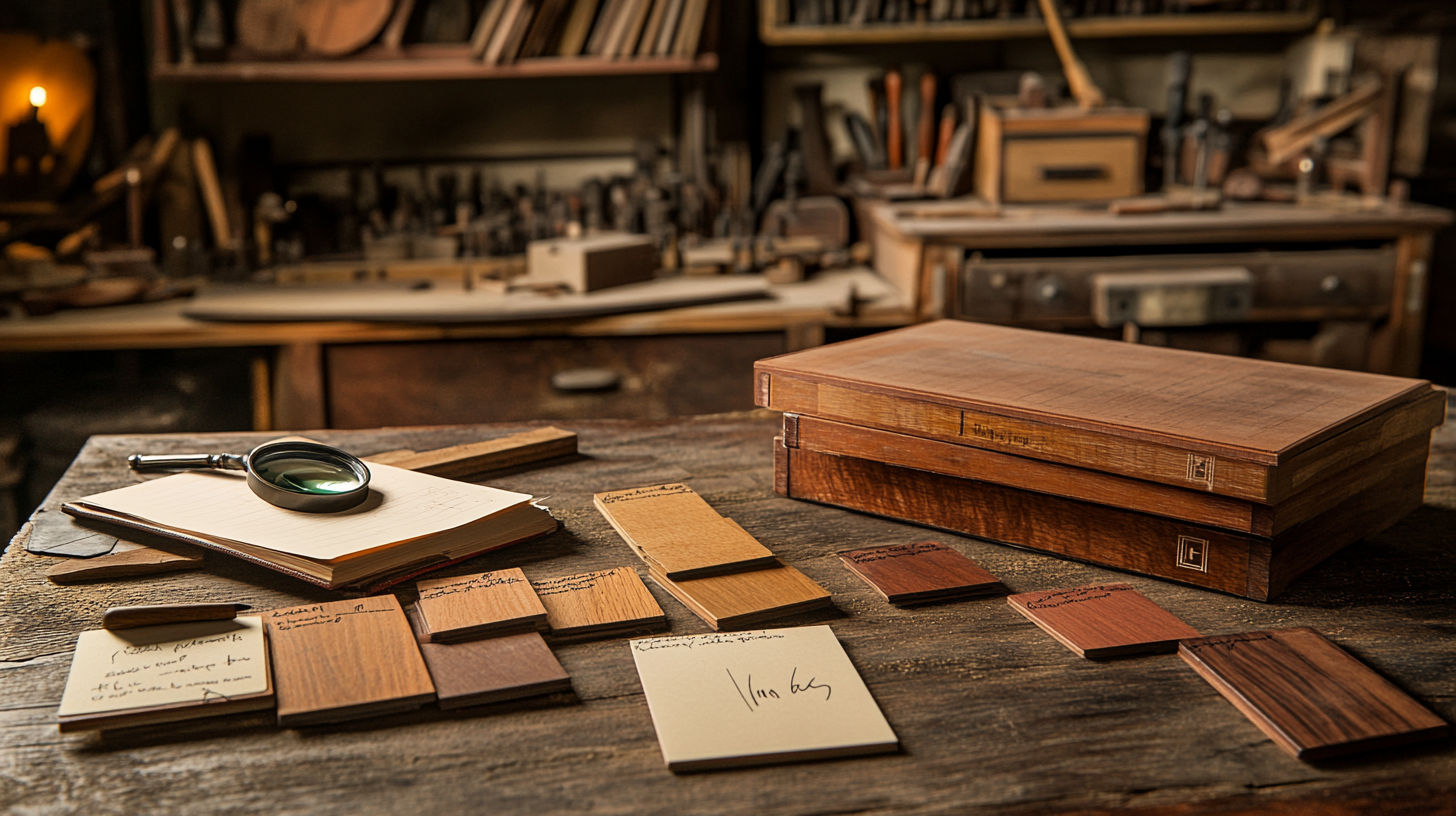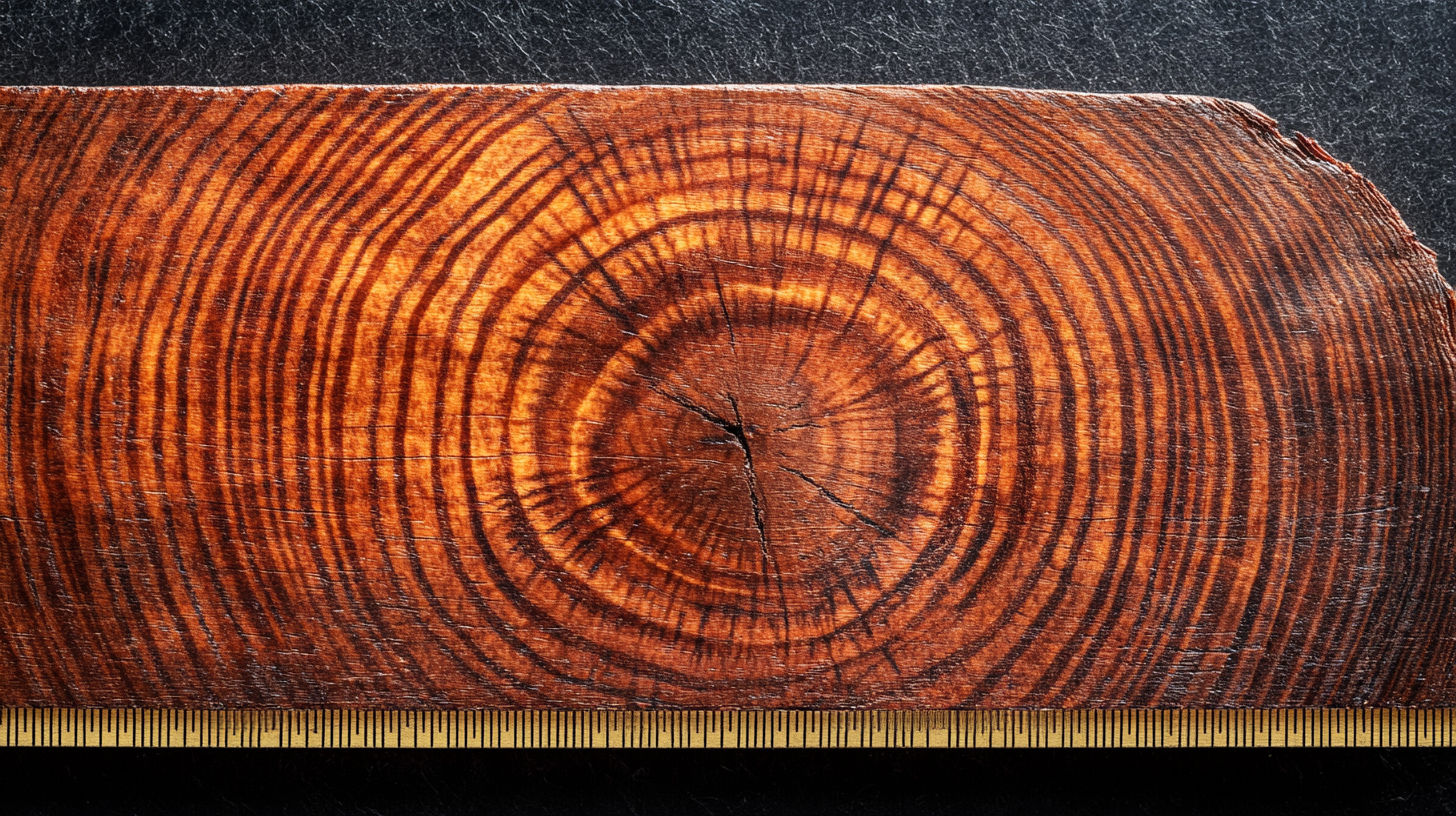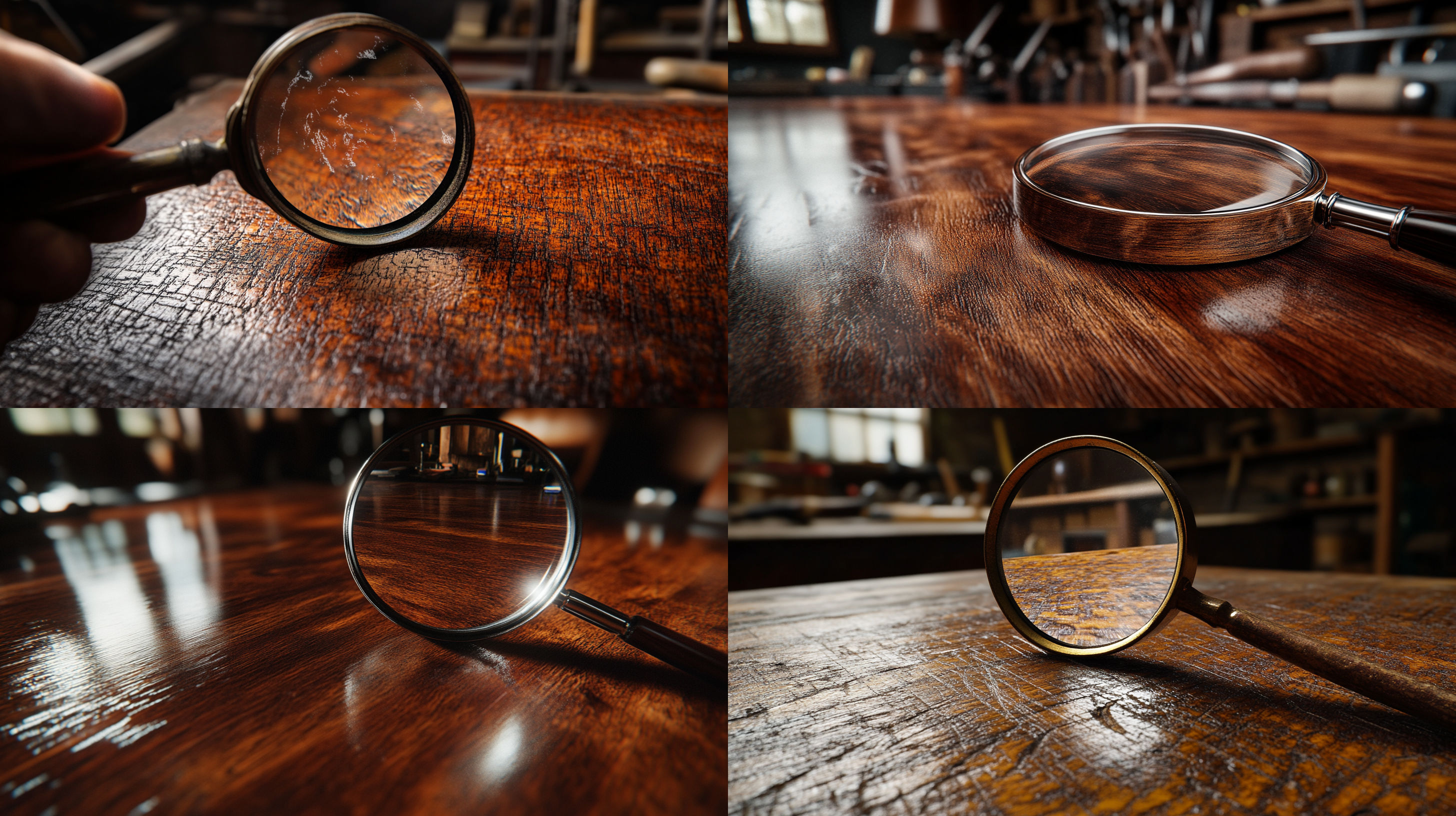The ability to identify different wood types is an essential skill for antique furniture collectors, dealers, and enthusiasts. Understanding the material composition of a piece can reveal important information about its age, origin, authenticity, and value. Unlike modern furniture, which often uses engineered or composite woods, antique pieces typically feature solid hardwoods that were chosen for their specific qualities and aesthetic appeal. In this comprehensive guide, we’ll explore the characteristics of various wood types commonly found in antique furniture and provide practical techniques for accurate identification.
What You’ll Learn in This Guide
- How to distinguish between hardwoods and softwoods in antique furniture
- Key visual and physical characteristics for identifying common wood types
- Period-specific wood usage throughout furniture history
- Methods for examining wood grain, color, and structure
- Tools and techniques for professional wood identification
- How wood identification affects furniture valuation
Why Wood Identification Matters
Identifying the wood in an antique piece is often the first step in authentication. Different woods were popular during specific periods and in certain regions, so recognizing the material can immediately provide clues about when and where a piece was made. For example, oak dominated English furniture making until the late 17th century when walnut became fashionable. By the mid-18th century, mahogany had become the wood of choice for fine furniture.
Moreover, understanding wood types helps in valuation. Certain woods, like Cuban mahogany or Brazilian rosewood, command premium prices due to their rarity and desirable properties. Others, like pine, are generally considered less valuable unless the piece has exceptional provenance or craftsmanship.
Wood Identification Impact
Basic Wood Identification Techniques
Visual Inspection
The most immediate way to begin identifying wood is through careful visual examination. Look for these key characteristics:
Color: Note the natural color of the wood, keeping in mind that aging, exposure to light, and finish can alter the original hue. Try to examine areas that haven’t been exposed to direct sunlight or look at the underside of the piece.
Grain Pattern: Observe the direction, spacing, and distinctiveness of the grain lines. Some woods, like oak, have very pronounced grain patterns, while others, like maple, display subtler grain.
Figure: Look for distinctive patterns or visual effects in the wood, such as bird’s eye in maple, flame figures in mahogany, or tiger stripes in quartersawn oak.
Physical Examination
Beyond visual inspection, physical characteristics can provide valuable clues:
Weight: Hardwoods like oak and mahogany are typically heavier than softwoods like pine. Even among hardwoods, some (like ebony) are exceptionally dense, while others (like poplar) are relatively light.
Hardness: Test the hardness by pressing your fingernail into an inconspicuous area. It should make no impression on hard woods like maple or oak but might leave a mark on softer woods like pine.
Odor: Some woods have distinctive scents, particularly when freshly cut or sanded. Cedar has a well-known sweet aroma, while walnut has a more earthy scent.
End Grain: Examining the end grain (the cut surface perpendicular to the grain) can reveal distinctive cell structures that help identify the wood species.
Wood Identification Checklist
Use these steps to systematically identify wood in antique furniture
- Examine the color in both exposed and hidden areas
- Analyze the grain pattern and direction
- Check for distinctive figure patterns
- Assess the weight relative to the piece's size
- Test hardness on an inconspicuous area
- Look for end grain patterns where visible
- Consider the furniture's age and style when making determinations
Distinguishing Hardwoods vs. Softwoods
Hardwoods
Hardwoods come from deciduous trees (those that lose their leaves annually) and are generally denser, stronger, and more durable than softwoods. In antique furniture, hardwoods were typically used for fine, high-quality pieces meant to last generations.
Common characteristics of hardwoods:
- Usually heavier and denser
- More complex and varied grain patterns
- Greater resistance to dents and scratches
- Often darker in color
- Higher cost and perceived value
Common hardwoods in antique furniture:
- Oak
- Mahogany
- Walnut
- Cherry
- Maple
- Rosewood
- Satinwood
Softwoods
Softwoods come from coniferous trees (typically evergreens) and are generally less dense and more susceptible to damage than hardwoods. In antique furniture, softwoods were often used for more utilitarian pieces, secondary woods (interior parts), or in regional furniture where these woods were abundant.
Common characteristics of softwoods:
- Usually lighter in weight
- Simpler, more uniform grain patterns
- More susceptible to dents and damage
- Often lighter in color
- Typically less expensive
Common softwoods in antique furniture:
- Pine
- Cedar
- Spruce
- Fir
Common Woods in Antique Furniture
Oak
Oak has been one of the most important furniture woods throughout history, particularly in English and American furniture from the 16th to 19th centuries.
Identifying characteristics:
- Color: Light to medium brown, often with a slight golden or reddish hue
- Grain: Strong, prominent straight grain with distinctive ray flecks when quarter-sawn
- Weight: Heavy and dense
- Distinctive features: Large, open pores visible to the naked eye; quarter-sawn oak shows distinctive ray flecks (“tiger stripes”)
Historical usage: Oak dominated furniture making until the late 17th century. It was used extensively in Tudor, Elizabethan, Jacobean, and early American furniture.
Mahogany
Mahogany became the premier furniture wood in the 18th century, particularly associated with Georgian, Federal, and Empire styles.
Identifying characteristics:
- Color: Medium to dark reddish-brown, deepening with age
- Grain: Straight to slightly interlocked, with a fine, uniform texture
- Weight: Moderately heavy to heavy, depending on species
- Distinctive features: Often displays chatoyancy (shifting patterns of light reflection); Cuban/Spanish mahogany may show stripe, ribbon, or flame figures
Historical usage: Dominated fine furniture making from about 1730 to 1830, particularly associated with Chippendale, Hepplewhite, and Sheraton designs.
Walnut
Walnut gained popularity in the late 17th century and has remained a prestigious furniture wood ever since.
Identifying characteristics:
- Color: Light to dark chocolate brown, sometimes with purple undertones
- Grain: Typically straight but can be wavy or curly with distinctive figure
- Weight: Moderately heavy
- Distinctive features: May display attractive figured patterns; often has darker streaks
Historical usage: Popular in William and Mary, Queen Anne, and early Georgian periods. American black walnut was widely used in American furniture from the 18th century onward.
Cherry
American cherry (black cherry) became a signature wood for American furniture, especially in the Federal period.
Identifying characteristics:
- Color: Light reddish-brown when fresh, darkening to a rich reddish-brown with age
- Grain: Straight, fine, and uniform with a satiny texture
- Weight: Moderately heavy
- Distinctive features: May contain small dark gum pockets; acquires a deep patina with age
Historical usage: Popular in American furniture from the late 18th century, particularly in Federal and Shaker styles.

Maple
Maple has been used in furniture making for centuries, with particular prominence in American colonial and Federal furniture.
Identifying characteristics:
- Color: Pale cream to light reddish-brown
- Grain: Generally straight with a fine, even texture
- Weight: Heavy, especially hard maple
- Distinctive features: “Bird’s eye” and “tiger” figures in some specimens; takes stain inconsistently
Historical usage: Common in American colonial furniture, particularly in New England; often used for turned elements and painted furniture.
Rosewood
Various species of rosewood gained prominence in the 19th century, particularly in high-style Victorian furniture.
Identifying characteristics:
- Color: Dark brown with distinctive dark purple or black streaking
- Grain: Often dramatic and irregular, sometimes with a spider-webbed appearance
- Weight: Very heavy
- Distinctive features: Distinctive sweet smell when freshly cut; typically has an oily feel
Historical usage: Popular in Regency, Empire, and Victorian furniture, especially for veneers and fine details.
Pine
While considered a secondary wood, pine was extensively used in country, rustic, and vernacular furniture.
Identifying characteristics:
- Color: Yellow to light brown, darkening to amber with age
- Grain: Straight with visible growth rings and resin canals
- Weight: Light
- Distinctive features: Knots are common; soft and easily dented
Historical usage: Used for country furniture, painted pieces, and as a secondary wood in fine furniture (for drawer sides, backs, etc.).
Value Impact of Different Wood Types
How wood types generally affect antique furniture values (can vary based on condition, style, and provenance)
</tbody>
</table>
Advanced Wood Identification Methods
Microscopic Examination
Professional wood scientists and conservators often use microscopy to identify wood species with certainty. Under magnification, different woods show distinctive cellular structures that serve as “fingerprints” for identification.
What to look for:
- Cell types and arrangements
- Vessel/pore patterns and size
- Ray width and height
- Presence of specific anatomical features
Portable digital microscopes are now available that connect to smartphones, making this technique more accessible to collectors and dealers.
UV Light Testing
Some woods display distinctive fluorescence under ultraviolet light, which can help with identification:
- Brazilian rosewood often shows a distinctive red-orange fluorescence
- Maple may glow with a yellowish color
- Padauk displays a vivid orange-red
- Some finishes and treatments will also fluoresce, which can indicate age or restoration
Dendrochronology
For extremely valuable or historically significant pieces, dendrochronology (tree-ring dating) can help establish both the species and the age of the wood. This technique requires removing a small sample and is usually reserved for museum-quality items.
Reference Sample Comparison
Building or acquiring a collection of identified wood samples is invaluable for visual comparison. Many professional appraisers maintain reference libraries of wood samples.

Historical Wood Usage in Furniture
- 1500-1650
The Age of Oak
Oak dominated furniture making throughout Europe, particularly in England. Pieces tend to be heavy, solid, and often feature carved decoration. Oak was chosen for its strength, durability, and availability. - 1650-1720
The Walnut Period
Walnut gradually replaced oak as the premier furniture wood. Lighter in weight than oak, with a finer grain, walnut allowed for more delicate designs, including the curved lines of the Queen Anne style. - 1720-1830
The Mahogany Era
Mahogany imports revolutionized furniture making. Its strength, stability, and beautiful grain made it ideal for the refined designs of Chippendale, Hepplewhite, and Sheraton. This period saw the highest quality cabinetmaking. - 1780-1820
American Federal Period
In America, cherry and maple gained prominence alongside mahogany. These native hardwoods were used extensively in Federal-style furniture, with cherry particularly favored for its warm color and fine grain. - 1820-1900
The Victorian Period
Multiple exotic woods became fashionable, including rosewood, satinwood, and ebony. Furniture often featured combinations of different woods, with dark woods like walnut and rosewood dominating the mid to late Victorian era.
Detecting Veneers, Inlays, and Secondary Woods
Identifying Veneered Surfaces
Veneering (applying thin sheets of high-quality wood over a base of lesser wood) has been used since ancient times but became particularly sophisticated in the 18th century. To identify veneered surfaces:
- Examine edges and corners where veneer may have chipped away
- Look for regular grain patterns across multiple surfaces—too perfect a match often indicates veneer
- Check for seams where veneer sheets meet
- Tap the surface gently—solid wood produces a different sound than veneered surfaces
Veneering is not a sign of poor quality—many of the finest antique pieces use veneers to showcase exceptional figured wood while enhancing structural stability.
Identifying Inlays and Marquetry
Inlays and marquetry involve inserting contrasting woods (and sometimes other materials) into a wood surface to create decorative patterns:
- Look for flush surfaces where different materials meet
- Observe color contrast between the inlay and background
- Check for precise geometric patterns or pictorial designs
- Note the thin edges where inlaid pieces join the background
Recognizing Secondary Woods
Different woods were often used for non-visible parts of furniture:
- Examine drawer bottoms, backs, and interior structures
- Check undersides of tables and case pieces
- Look inside cabinets and behind drawers
Common secondary woods include:
- Pine (especially in English furniture)
- Poplar (common in American furniture)
- Oak (often used as a secondary wood in Continental pieces)
- Various local woods based on regional availability
Understanding the use of secondary woods can help determine regional origin and authenticity, as specific combinations of primary and secondary woods are associated with particular regions and time periods.
Common Challenges in Wood Identification
Patina and Aging Effects
Wood naturally changes color over time due to oxidation and exposure to light. These changes can make identification challenging:
- Many light-colored woods (cherry, mahogany, walnut) darken significantly
- Some woods (like pine) yellow or amber with age
- Uneven exposure can create color variations across a single piece
Finishes and Treatments
Historic finishes and treatments can dramatically alter wood’s appearance:
- Shellac, varnish, and oil finishes deepen color and add amber tones
- Stains can completely change the apparent wood species
- Grain fillers can alter the visible texture of wood
- Wax and polish buildup can obscure grain details
Reproduction and Deception
Be aware that some pieces may be deliberately misleading:
- Victorian “mahogany” furniture often used stained birch or beech
- Many “walnut” pieces are actually stained less expensive woods
- Modern reproductions may use woods that weren’t available historically
- Some woods are commonly substituted for more expensive species (e.g., Philippine mahogany for true mahogany)
Regional Variations
Wood terminology can vary by region:
- American “walnut” refers to black walnut, while European “walnut” is usually European walnut (two different species)
- “Mahogany” can refer to numerous species from different regions
- Common names often don’t align with botanical classifications
Common Questions About Identifying Wood in Antique Furniture
How can I tell if an antique piece is made of real wood?
The best way to determine if a piece is made of real wood is to examine the end grain. This is the surface exposed when wood is cut across its growth rings. Real wood will show distinctive growth ring patterns and cellular structures.
Other indicators include:
- Looking for variations in grain pattern (manufactured woods typically have repetitive patterns)
- Checking hidden areas like the bottom, back, or inside of drawers
- Wood will typically have a non-uniform appearance with natural variation
Solid wood pieces are usually heavier than those made with manufactured wood
What is the most valuable wood used in antique furniture?
The value of wood in antique furniture depends on several factors, including rarity, beauty, and historical context. Some of the most highly valued woods include:
- Cuban (Spanish) mahogany - prized for its deep color, durability, and impressive figure
- Brazilian rosewood - valued for its rich color and distinctive grain pattern
- Burled walnut - sought after for its unique swirling grain patterns
However, the most valuable piece isn’t always determined by wood type alone. Provenance, craftsmanship, condition, and historical significance often matter more than the specific wood used.
Is there an app that can help identify wood types in furniture?
Yes, there are several apps designed to help identify wood types, although their accuracy can vary:
- Xylorix Inspector is a specialized app that uses macroscopic end-grain images for automated wood identification
- Some general plant identification apps can sometimes identify wood species
- iHandy Carpenter includes a wood recognition feature
While these apps can be helpful starting points, they shouldn’t replace knowledge and experience. Many professional appraisers still rely on visual inspection, reference samples, and years of experience rather than technology alone.
How can I tell if my furniture is oak or mahogany?
Oak and mahogany have distinctly different characteristics that make them relatively easy to distinguish:
Oak:
- Has a prominent, open grain pattern
- Typically lighter in color (light to medium brown)
- Quarter-sawn oak shows distinctive medullary ray "flecks" or "tiger stripes"
- Very hard and heavy
- Often has a slight yellowish or pinkish undertone
Mahogany:
- Has a finer, more uniform grain pattern
- Medium to dark reddish-brown color that deepens with age
- Often displays chatoyancy (a shifting pattern when viewed from different angles)
- Moderately heavy with a smooth surface
Distinctive reddish undertone
How do I identify wood grain patterns?
Wood grain patterns are determined by how the wood was cut relative to the growth rings of the tree. The main types of grain patterns are:
- Plain-sawn (flat-sawn) - Cut tangentially to the growth rings, creating "cathedral" or "flame" patterns
- Quarter-sawn - Cut radially to the growth rings, creating straight, parallel grain lines and exposing medullary rays in some species
- Rift-sawn - Cut at an angle between plain-sawn and quarter-sawn, producing straight grain with minimal figure
Additionally, look for specialized grain figures such as:
- Bird’s eye (small circular patterns resembling eyes)
- Curly or fiddleback (alternating light and dark bands)
- Burl (swirling, distorted grain from tree growths)
Ribbon or stripe (alternating light and dark stripes due to interlocked grain)
What does the construction tell us about the age of antique furniture?
Construction techniques can be powerful indicators of a piece's age:
- Joinery: Hand-cut dovetails (irregular spacing and size) suggest pre-1860s construction; machine-cut dovetails (uniform) indicate later production
- Saw marks: Straight saw marks indicate circular saws (post-1830s); irregular or diagonal marks suggest pit saws or hand sawing (earlier periods)
- Nails: Hand-forged nails (pre-1800), cut nails (1790-1890), and wire nails (post-1880) help date pieces
- Wood selection: Secondary woods often varied by region and period
- Cut marks: Look for plane, spokeshave, or drawknife marks on the undersides and backs
Additionally, examining the wood itself can reveal age. Old-growth timber (used in antiques) typically has tighter growth rings than the faster-grown timber used in modern reproductions.
External Resources for Wood Identification
The Ultimate Guide To Identifying Wood Types In Furniture
A comprehensive resource with step-by-step guidance using image comparisons of color, grain, texture, figure, weight, and more to help identify wood types in furniture.
Woods in Antique Furniture: A Definitive Guide
Detailed coverage of seventeen identified kinds of woods used in British antique furniture, including oak, walnut, mahogany, satinwood, rosewood, calamander, yew, elm, and more.
How to Identify Wood in Antique Furniture | M.S. Rau
Expert guidance from a respected antique dealer on identifying hardwoods vs. softwoods and examining distinctive grain patterns in mahogany and other woods.
In the Antique Woods: An Invaluable Guide for Collectors
A comprehensive resource that makes it easier to identify antique woods and become a more knowledgeable collector, from one of the leading online auction platforms.
How to Identify Antique Wooden Furniture
Practical tips for examining construction details, such as looking for tool marks on drawer bottoms, sides, and backs to determine age and authenticity.
Antique Furniture - Types of Wood
Detailed descriptions of wood types used in antique furniture, with a focus on their visual and physical characteristics, including how they age and take polish.
Final Thoughts on Wood Identification
Identifying wood in antique furniture combines science, history, and a trained eye. While this guide provides a foundation, developing expertise comes with practice and exposure to many pieces over time. Consider joining a local antique club, attending workshops, or consulting with experienced dealers to refine your identification skills.
Remember that wood identification is just one aspect of antique furniture evaluation. Construction techniques, stylistic elements, hardware, and provenance are equally important in determining age, authenticity, and value. When these elements align—when the wood species matches the purported age and origin of a piece—you can be more confident in your assessment.
As with any specialized skill, learning to identify wood types is an ongoing journey. Each piece you examine adds to your knowledge base, training your eye to recognize subtle differences. Whether you’re a collector, dealer, or simply an enthusiast, developing this skill will deepen your appreciation for the craftsmanship and materials that went into creating furniture that has endured for generations.
Get a Professional Appraisal
Unsure about your item’s value? Our certified experts provide fast, written appraisals you can trust.
- Expert report with photos and comps
- Fast turnaround
- Fixed, upfront pricing
No obligation. Secure upload.
| Category | Price | Notes |
|---|---|---|
| Cuban/Spanish Mahogany | Premium value (30-50% higher) | Highly sought-after for rich color and figure |
| Brazilian Rosewood | Premium value (20-40% higher) | Restricted availability due to CITES regulations |
| Walnut | Higher value (15-30% premium) | Especially for burled or figured examples |
| Cherry | Mid-high value (10-25% premium) | Highly valued in American furniture |
| Oak | Mid-range value | Quarter-sawn oak commands higher prices |
| Maple | Mid-range value | Figured maple (bird's eye, tiger) worth more |
| Pine | Lower value (unless exceptional) | Higher for early or regional examples |




